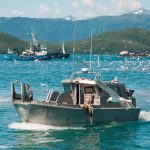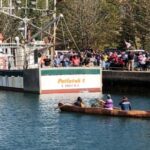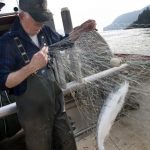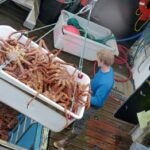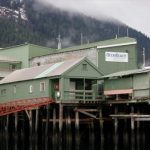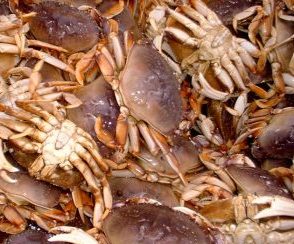Monthly Archives: February 2017
Ottawa to invest in ‘fisheries innovation’ for Atlantic Canada following EU trade deal
 With Canada’s trade deal with the European Union on track to come into force provisionally within weeks, the federal government is set to announce a new fisheries innovation fund. But don’t portray this new money as a way to compensate Atlantic Canada, Fisheries Minister Dominic LeBlanc told CBC News last week. “I didn’t say compensation. That was your word,” LeBlanc said after an announcement in Vancouver last week. “What I said is that we’re prepared to work with provinces to look for a way to make our fishing industry the most innovative, productive, sustainable and globally competitive that we can.” Compensation was what Newfoundland and Labrador was looking for in the face of the Comprehensive Economic and Trade Agreement (CETA), which will prevent Canadian provinces from placing any export restrictions on raw fish. Continue reading the story here 08:58
With Canada’s trade deal with the European Union on track to come into force provisionally within weeks, the federal government is set to announce a new fisheries innovation fund. But don’t portray this new money as a way to compensate Atlantic Canada, Fisheries Minister Dominic LeBlanc told CBC News last week. “I didn’t say compensation. That was your word,” LeBlanc said after an announcement in Vancouver last week. “What I said is that we’re prepared to work with provinces to look for a way to make our fishing industry the most innovative, productive, sustainable and globally competitive that we can.” Compensation was what Newfoundland and Labrador was looking for in the face of the Comprehensive Economic and Trade Agreement (CETA), which will prevent Canadian provinces from placing any export restrictions on raw fish. Continue reading the story here 08:58
Women in Oregon fishing industry have important, but sometimes invisible role
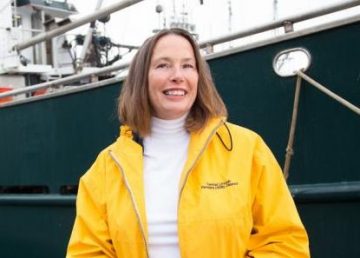 Women have always played an important role in Oregon’s commercial fishing industry, even if they don’t actually fish or work on boats – but a new study indicates their roles are changing. The research, funded by Oregon Sea Grant and published in the journal Marine Policy, was based on a series of oral-history interviews conducted mainly with fishermen and their wives. The findings could help government agencies set policies that take into account their potential impacts on the well-being of entire fishing communities, said Flaxen Conway, a community outreach specialist with Oregon Sea Grant Extension and a co-author of the paper. Continue reading the article here 08:35
Women have always played an important role in Oregon’s commercial fishing industry, even if they don’t actually fish or work on boats – but a new study indicates their roles are changing. The research, funded by Oregon Sea Grant and published in the journal Marine Policy, was based on a series of oral-history interviews conducted mainly with fishermen and their wives. The findings could help government agencies set policies that take into account their potential impacts on the well-being of entire fishing communities, said Flaxen Conway, a community outreach specialist with Oregon Sea Grant Extension and a co-author of the paper. Continue reading the article here 08:35
AMSEA to hold two Fishing Vessel Drill Conductor Workshops in South Carolina in March
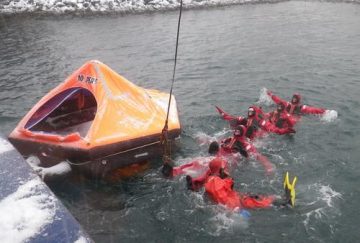 Alaska Marine Safety Education Association workshops meet the U. S. Coast Guard training requirements for drill conductors on documented commercial fishing vessels operating beyond the federal boundary line. On Thursday, March 9, a workshop will be conducted in Murrells Inlet from 8:00 a.m. to 8:00 p.m. at the Murrells Inlet Community Center, 4462 Murrells Inlet Road. A second workshop will be conducted on Saturday, March 11 in McClellanville at the McClellanville Town Office, 405 Pinckney Street. Instructor Michael Lawson will cover man-overboard recovery and firefighting, emergency position-indicating radio beacon stations, flares and maydays, emergency drills, helicopter rescue, life rafts and abandon ship procedures, personal floatation devices, immersion suits and cold-water survival skills. The workshop will include an “in-the-water” practice session for participants to practice survival skills. Interested mariners may register for the workshops online at www.amsea.org or call AMSEA at 907-747-3287. Link 07:15
Alaska Marine Safety Education Association workshops meet the U. S. Coast Guard training requirements for drill conductors on documented commercial fishing vessels operating beyond the federal boundary line. On Thursday, March 9, a workshop will be conducted in Murrells Inlet from 8:00 a.m. to 8:00 p.m. at the Murrells Inlet Community Center, 4462 Murrells Inlet Road. A second workshop will be conducted on Saturday, March 11 in McClellanville at the McClellanville Town Office, 405 Pinckney Street. Instructor Michael Lawson will cover man-overboard recovery and firefighting, emergency position-indicating radio beacon stations, flares and maydays, emergency drills, helicopter rescue, life rafts and abandon ship procedures, personal floatation devices, immersion suits and cold-water survival skills. The workshop will include an “in-the-water” practice session for participants to practice survival skills. Interested mariners may register for the workshops online at www.amsea.org or call AMSEA at 907-747-3287. Link 07:15
Insurance tips for fishing vessels – “Getting the Most Value When Buying Fishing Vessel Insurance”
 It can be tricky to find the right protection coverage for fishing boats at the right price. How much a vessel is insured for is traditionally determined by a marine surveyor but boat owners also must protect against risk. A new guide called “Getting the Most Value When Buying Fishing Vessel Insurance” gives simple tips and outlines buying pitfalls. At least some boat owners new to the industry or new to owning boats may not be fully aware of the responsibilities of a vessel owner are under general maritime law and various versions of the Jones Act. Those two areas of law provide a high degree of protection not just to crew members but others who provide services to boats. Audio report, read the rest here 19:04
It can be tricky to find the right protection coverage for fishing boats at the right price. How much a vessel is insured for is traditionally determined by a marine surveyor but boat owners also must protect against risk. A new guide called “Getting the Most Value When Buying Fishing Vessel Insurance” gives simple tips and outlines buying pitfalls. At least some boat owners new to the industry or new to owning boats may not be fully aware of the responsibilities of a vessel owner are under general maritime law and various versions of the Jones Act. Those two areas of law provide a high degree of protection not just to crew members but others who provide services to boats. Audio report, read the rest here 19:04
Offshore drilling opponents re-gear for new round of battles
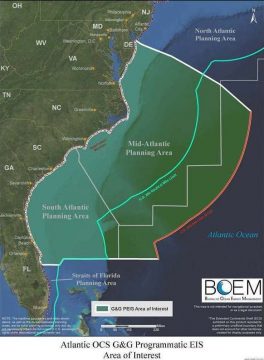 A little more than a month after seismic blast testing for oil and natural gas was stopped offshore of South Carolina, exploration companies are gearing up for a new try. A dozen anti-drilling advocates met Tuesday in Charleston to discuss expanding the opposition. They may look inland for more support in the vein of the massive coastal protest that in 2016 helped derail plans for testing and drilling. Frank Knapp, founder of the anti-drilling Business Alliance for Protecting the Atlantic Coast, said he has heard the exploration industry is planning to approach the federal Bureau of Ocean Energy Management about reversing a testing permit denial adopted during the last days of the Obama administration. Knapp’s group represents more than 35,000 businesses and 500,000 commercial fishing families from Maine to Florida. Continue reading the story here 17:58
A little more than a month after seismic blast testing for oil and natural gas was stopped offshore of South Carolina, exploration companies are gearing up for a new try. A dozen anti-drilling advocates met Tuesday in Charleston to discuss expanding the opposition. They may look inland for more support in the vein of the massive coastal protest that in 2016 helped derail plans for testing and drilling. Frank Knapp, founder of the anti-drilling Business Alliance for Protecting the Atlantic Coast, said he has heard the exploration industry is planning to approach the federal Bureau of Ocean Energy Management about reversing a testing permit denial adopted during the last days of the Obama administration. Knapp’s group represents more than 35,000 businesses and 500,000 commercial fishing families from Maine to Florida. Continue reading the story here 17:58
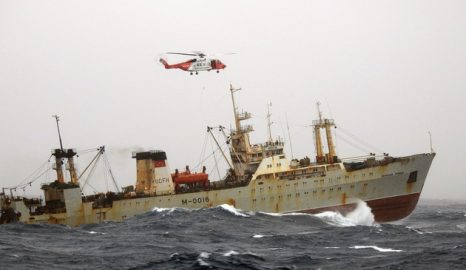
Irish Coast Guard rescues severely injured Russian fisherman 140 miles out at sea in heavy winds
The Irish Coast Guard helicopter has rescued a severely injured crewman from a Russian fishing vessel 140 miles off the coast of Kerry in difficult weather conditions. The Shannon-based Rescue 115 helicopter was assisted in a search and rescue operation by the LÉ Róisín naval ship and the Waterford-based Rescue 117 helicopter. Crew members from the LÉ Róisín boarded the Russian fishing vessel this afternoon and assisted in evacuating the crewman. It is believed he became injured in an accident involving fishing gear and may have suffered multiple broken bones. Weather conditions were difficult for the long-range mission, with a strong west to south west swell and gusts of over 35mph. Two additional images, continue reading the story here 17:05
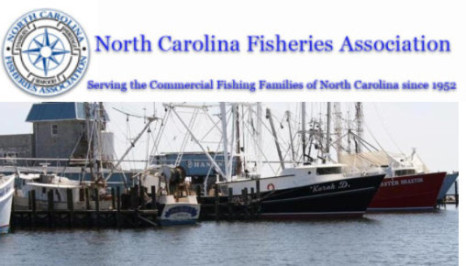
North Carolina Fisheries Association Weekly Update for Februay 20, 2017
Click here to read the Weekly Update, to read all the updates, Click here 15:49
MARINE FISHERIES COMMISSION: by Jerry Schill – Disappointing is not quite the word to use to describe my reaction to the MFC vote, but neither is shocking. For anyone that is familiar with this particular commission, the vote to accept the petition isn’t shocking. click Weekly Update to read the rest
Port Clyde: Lobster, wind and recreation vie for waterfront property
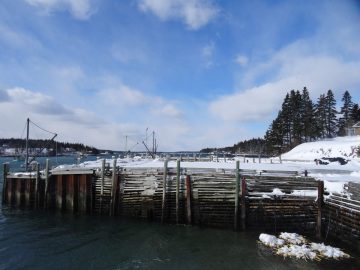 Some residents have been raising questions about the well-situated, but empty and apparently unused, waterfront property on Port Clyde Harbor. The town has gradually begun to develop a concept for use of the property with help from a consultant, Noel Musson, of Southwest Harbor-based planning firm The Musson Group. The current vision-in-progress would split the property between a recreational portion for the public, and commercial space. Some of Port Clyde’s commercial fishermen, however, have their own ideas, and said they would at least like to have access to the property in a town where wharf space and the lobster-buying business have been consolidated into the hands of just a few owners. Continue reading the story here 14:05
Some residents have been raising questions about the well-situated, but empty and apparently unused, waterfront property on Port Clyde Harbor. The town has gradually begun to develop a concept for use of the property with help from a consultant, Noel Musson, of Southwest Harbor-based planning firm The Musson Group. The current vision-in-progress would split the property between a recreational portion for the public, and commercial space. Some of Port Clyde’s commercial fishermen, however, have their own ideas, and said they would at least like to have access to the property in a town where wharf space and the lobster-buying business have been consolidated into the hands of just a few owners. Continue reading the story here 14:05
Fisheries and Aquaculture Minister Keith Colwell confirms Chinese firm eyeing other N.S. seafood products
 Sumo-sized online retailer Alibaba is hungry to sell other Nova Scotia seafood products in addition to lobster, says provincial Fisheries and Aquaculture Minister Keith Colwell. After inking a quality assurance agreement last week with the Chinese online retailer who is planning to sell Nova Scotia lobsters on its Tmall website, Colwell flew back from Shanghai. In an interview, he strongly suggested negotiations are already underway between the province and Alibaba to work out quality assurance agreements for other Nova Scotia seafood products. But the fisheries minister was tight-lipped about the details, refusing to divulge which products might be under consideration and when other quality assurance programs might be rolled out. Continue reading the story here 12:14
Sumo-sized online retailer Alibaba is hungry to sell other Nova Scotia seafood products in addition to lobster, says provincial Fisheries and Aquaculture Minister Keith Colwell. After inking a quality assurance agreement last week with the Chinese online retailer who is planning to sell Nova Scotia lobsters on its Tmall website, Colwell flew back from Shanghai. In an interview, he strongly suggested negotiations are already underway between the province and Alibaba to work out quality assurance agreements for other Nova Scotia seafood products. But the fisheries minister was tight-lipped about the details, refusing to divulge which products might be under consideration and when other quality assurance programs might be rolled out. Continue reading the story here 12:14
MAFMC & ASMFC Set Black Sea Bass Specs for 2017-18 – Benchmark Assessment Finds Resource Not Overfished & Overfishing Not Occurring
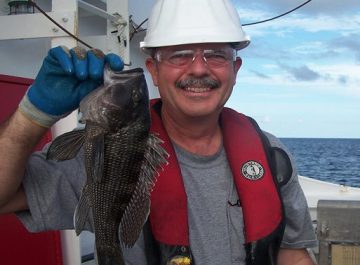 The Mid-Atlantic Fishery Management Council (Council) and the Atlantic States Marine Fisheries Commission (Commission) have approved revised specifications for the 2017 black sea bass fishing year as well as specifications for the 2018 fishing year for the Northern black sea bass stock (Cape Hatteras, North Carolina to the US-Canadian border). The revised specifications are based on the results of the 2016 benchmark stock assessment, which found the stock is not overfished and overfishing is not occurring. The approved limits are consistent with the recommendations of the Council’s Science and Statistical Committee. The Commission’s actions are final and apply to state waters (0-3 miles from shore). The Council will forward its recommendations for federal waters (3 – 200 miles from shore) to NOAA Fisheries Greater Atlantic Regional Fisheries Administrator for final approval. Read the rest here 11:23
The Mid-Atlantic Fishery Management Council (Council) and the Atlantic States Marine Fisheries Commission (Commission) have approved revised specifications for the 2017 black sea bass fishing year as well as specifications for the 2018 fishing year for the Northern black sea bass stock (Cape Hatteras, North Carolina to the US-Canadian border). The revised specifications are based on the results of the 2016 benchmark stock assessment, which found the stock is not overfished and overfishing is not occurring. The approved limits are consistent with the recommendations of the Council’s Science and Statistical Committee. The Commission’s actions are final and apply to state waters (0-3 miles from shore). The Council will forward its recommendations for federal waters (3 – 200 miles from shore) to NOAA Fisheries Greater Atlantic Regional Fisheries Administrator for final approval. Read the rest here 11:23
Nantucket Sound location of most fatal turtle entanglements
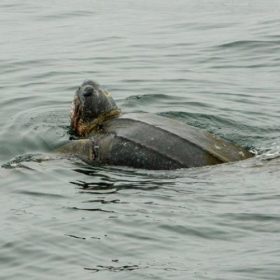 By Aug. 1, Chatham fisherman Jamie Eldredge has pulled the 200 conch pots he has in Nantucket Sound. He has made the summer switch to fishing for dogfish in the Atlantic Ocean. In doing so, Eldredge has avoided what has become a major headache for conch fishermen – large leatherback turtles that get tangled up in conch and lobster lines while pursuing jellyfish. In Nantucket Sound, a significant number of those turtles die, three times more than anywhere else in Massachusetts, and state fishery scientists are worried they may be targeted by a lawsuit charging they are not doing enough to protect an endangered species. In a series of public hearings held in coastal and island communities this month, they asked conch fishermen for input on how to deal with the problem. State Division of Marine Fisheries officials think they know the answer: pull all conch pots in August. Continue read the story here 10:35
By Aug. 1, Chatham fisherman Jamie Eldredge has pulled the 200 conch pots he has in Nantucket Sound. He has made the summer switch to fishing for dogfish in the Atlantic Ocean. In doing so, Eldredge has avoided what has become a major headache for conch fishermen – large leatherback turtles that get tangled up in conch and lobster lines while pursuing jellyfish. In Nantucket Sound, a significant number of those turtles die, three times more than anywhere else in Massachusetts, and state fishery scientists are worried they may be targeted by a lawsuit charging they are not doing enough to protect an endangered species. In a series of public hearings held in coastal and island communities this month, they asked conch fishermen for input on how to deal with the problem. State Division of Marine Fisheries officials think they know the answer: pull all conch pots in August. Continue read the story here 10:35
Northern shrimp stocks still ‘critical’ – no improvement in spawning biomass
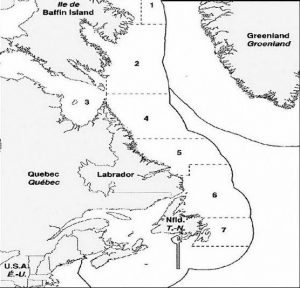 It’s the season to talk about the prospects for the shrimp fishery in Newfoundland and Labrador and the initial information for the new season does not look promising. In a media briefing this morning, Katherine Kanes, mathematician/stock-assessment biologist with Department of Fisheries and Oceans (DFO) outlined the current picture from the most recent stock assessments, for northern shrimp in fishing areas 6, 5 and 4 — off the Northern Peninsula and the coast of Labrador. Data collected from the fall multi-species trawl survey by DFO, as well as information from fishers shows there’s not been much improvement from last year. In SFA 6 — the area that most inshore commercial fishers from this province depend on for their shrimp catches — the biomass of female shrimp is still in the critical zone, she said. Continue reading the story here 09:26
It’s the season to talk about the prospects for the shrimp fishery in Newfoundland and Labrador and the initial information for the new season does not look promising. In a media briefing this morning, Katherine Kanes, mathematician/stock-assessment biologist with Department of Fisheries and Oceans (DFO) outlined the current picture from the most recent stock assessments, for northern shrimp in fishing areas 6, 5 and 4 — off the Northern Peninsula and the coast of Labrador. Data collected from the fall multi-species trawl survey by DFO, as well as information from fishers shows there’s not been much improvement from last year. In SFA 6 — the area that most inshore commercial fishers from this province depend on for their shrimp catches — the biomass of female shrimp is still in the critical zone, she said. Continue reading the story here 09:26
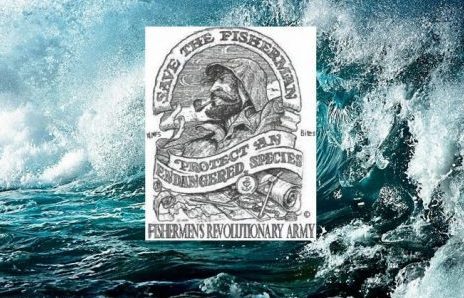
Harvey Haddock on fisherman’s rights.
In light of the recent court decision in regard to the proposed New York windmill farm allowing the project to proceed despite its potential effects on long established fishing industries, this scene, excerpted from the in-progress novel, “Delusions of a Madman”, showcases an irreverent slice of life from the Fishermans Dock Co-op, which illuminates the question; What are a fisherman’s rights? On a cold windy morning at the Fishermans Dock Co-op, all the boats are in, and a couple of small groups of fishermen are scattered at the docks unloading spots, generally discussing the last few days of fishing, and invariably complaining about one regulation or another. Henry’s in a hurry to the office today, it seems the morning coffee has done its magic, and he needs to make a deposit for Alice and Lil, the office secretary’s. He hurries through the dock careful not to slip on the ice, and enters the warm office, heads right, passing Alice sitting at her desk, and Lil, in the next room. “Again?” says Alice. Continue reading the story here 22:02
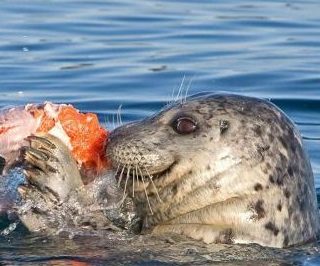
Study says seals eat more Chinook than Southern resident killer whales
Seals are eating more Chinook than Southern resident killer whales. That’s bad for both endangered species’ recoveries. “The seals might not be the enemy as much as the problem is that we’ve lost forage fish available to them,” said Joe Gaydos, science director of the SeaDoc Society on Orcas Island. According to a recent Canadian study, the amount of Chinook salmon eaten by seals in the Salish Sea has increased from 68 metric tons in 1970 to 625 metric tons in 2015. That’s double the amount Southern resident killer whales ate in 2015 in the same location, and six times more than commercial and recreational fisheries according to the study. Continue reading the story here 12:20
Scallops scuffle pitting small boats against big
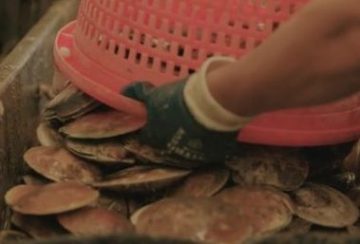 A disagreement over the right to fish for scallops off New England is pitting small boats against big ones in one of the most lucrative fisheries in the U.S. The federal government maintains different rules for the small- and big-boat scallop fisheries, though they work some of the same areas. Small boat fishermen say the conflict has arisen in the northern Gulf of Maine, a critically important fishing area stretching roughly from Boston to the border of Maine and Canada. At issue is the fact that the northern Gulf of Maine is fertile ground for scallops right now, and rules allow the bigger boats to harvest more of them. The smaller boats have a possession limit of 200 pounds, while the largest boats have no such limit, because they are regulated instead by a limited number of days at sea. Continue reading the article here 11:48
A disagreement over the right to fish for scallops off New England is pitting small boats against big ones in one of the most lucrative fisheries in the U.S. The federal government maintains different rules for the small- and big-boat scallop fisheries, though they work some of the same areas. Small boat fishermen say the conflict has arisen in the northern Gulf of Maine, a critically important fishing area stretching roughly from Boston to the border of Maine and Canada. At issue is the fact that the northern Gulf of Maine is fertile ground for scallops right now, and rules allow the bigger boats to harvest more of them. The smaller boats have a possession limit of 200 pounds, while the largest boats have no such limit, because they are regulated instead by a limited number of days at sea. Continue reading the article here 11:48
Linda Bean once hoped to be to lobster what Perdue is to chicken. What happened?
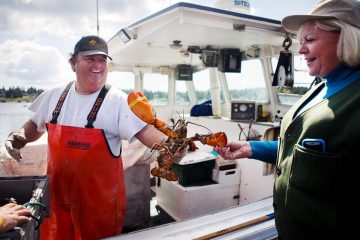 Linda Lorraine Bean, the other L.L. Bean, has spent the last decade promoting her lobster empire, one that merged the cachet of her family name with the popularity of the state’s top crustacean.,, So what happened to the sprawling business venture that Bean hoped to make as synonymous with lobster as Frank Perdue’s empire is to chicken? Bean, now in her 70s, declined to comment despite repeated attempts to reach her and those connected to her. It’s been a quiet departure for a woman not known to shy away from the spotlight. Read the article here 11:13
Linda Lorraine Bean, the other L.L. Bean, has spent the last decade promoting her lobster empire, one that merged the cachet of her family name with the popularity of the state’s top crustacean.,, So what happened to the sprawling business venture that Bean hoped to make as synonymous with lobster as Frank Perdue’s empire is to chicken? Bean, now in her 70s, declined to comment despite repeated attempts to reach her and those connected to her. It’s been a quiet departure for a woman not known to shy away from the spotlight. Read the article here 11:13
DMC researchers test technique to determine lobster’s age
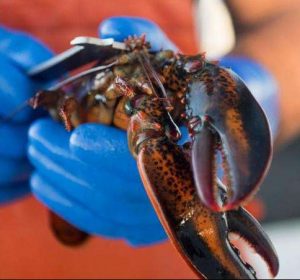 Research professor Rick Wahle and graduate student Carl Huntsberger are testing a technique at the University of Maine Darling Marine Center to determine the age of lobsters. Unlike fish, mollusks and trees, Wahle says lobsters and other crustaceans molt—or cast off their skeletons thereby discarding external signs of growth. That means a lobster’s age is estimated on size, but it’s a rough determination because ocean conditions affect the crustacean’s growth rate. Not knowing a lobster’s age is problematic for scientists and fishery managers seeking to measure the health of the fishery and the sustainability of the stock. Continue reading the story here 10:06
Research professor Rick Wahle and graduate student Carl Huntsberger are testing a technique at the University of Maine Darling Marine Center to determine the age of lobsters. Unlike fish, mollusks and trees, Wahle says lobsters and other crustaceans molt—or cast off their skeletons thereby discarding external signs of growth. That means a lobster’s age is estimated on size, but it’s a rough determination because ocean conditions affect the crustacean’s growth rate. Not knowing a lobster’s age is problematic for scientists and fishery managers seeking to measure the health of the fishery and the sustainability of the stock. Continue reading the story here 10:06
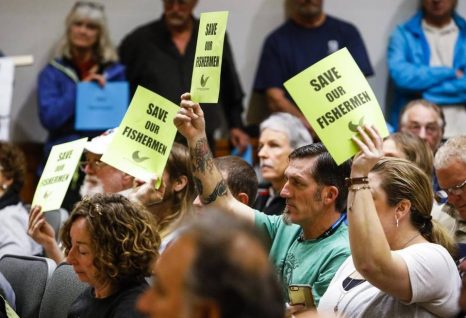
Thanks to the supervisors who protected SLO County fishermen
Many thanks to the San Luis Obispo County supervisors that support the fishermen, ranchers, farmers and our ports and harbor districts in the county regarding the Chumash Heritage National Marine Sanctuary issue. The supervisors that did not support us claimed that this was about oil. This issue has nothing to do with oil. It has to do with the livelihoods of those of us that make our living on land and sea. We are here to protect our livelihoods from federal intrusion and nothing more. One of the supervisors claimed they would not manage fisheries. Well, I can assure the public that neither he nor anyone in our county will be making that decision. It will be made in Washington, D.C., just like all of the hundreds of other rules that will be made regarding all national sanctuary management. Federal rules are not made by cities, counties or states. They are made only by the federal government. Link 09:53
Fisherman’s Strike Ends: “We Had A Gun To Our Heads”, Says Union Leader
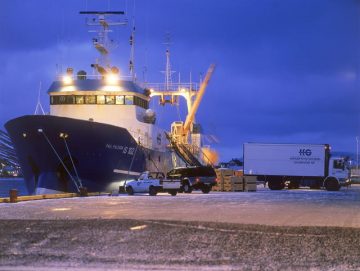 The strike that went on for about two months has finally drawn to a close, but one union official says the deal was reached after the Minister of Fisheries essentially threatened to enact a law forcing the fishermen back to work. RÚV reports that the vote to go back to work was a close one: 52.4% voted in favour, with 46.9% voting against, and only 53.7% of eligible fishermen took part in the vote. As to be expected from such a close vote, opinion was mixed amongst fishermen reporters spoke to. A great many were simply pleased to be back to work, while many others were still unsatisfied with the terms of the new collective bargaining agreement. Continue reading the story here 09:10
The strike that went on for about two months has finally drawn to a close, but one union official says the deal was reached after the Minister of Fisheries essentially threatened to enact a law forcing the fishermen back to work. RÚV reports that the vote to go back to work was a close one: 52.4% voted in favour, with 46.9% voting against, and only 53.7% of eligible fishermen took part in the vote. As to be expected from such a close vote, opinion was mixed amongst fishermen reporters spoke to. A great many were simply pleased to be back to work, while many others were still unsatisfied with the terms of the new collective bargaining agreement. Continue reading the story here 09:10
Groundfish Monitoring: New England Council Seeks Initial Input on Amendment 23 at Six Scoping Hearings in March
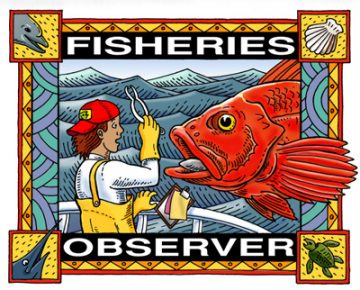 The New England Fishery
The New England Fishery
Chesapeake Bay advocates alarmed by plan that could open oyster sanctuaries to watermen
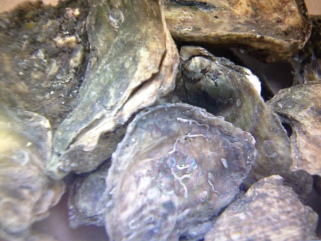 Some of the Chesapeake Bay’s most densely populated oyster sanctuaries could be opened to periodic harvesting under a plan being floated by state officials, setting up more conflict between alarmed environmentalists and watermen seeking to make a living. Neither side is pleased with the first draft of a new map of sanctuary boundaries in Maryland’s share of the bay. While watermen would gain some territory they ceded when a state oyster restoration strategy launched in 2010, dredging would be banned in other areas that are now open to harvesting. The net effect would be a loss of 11 percent of oyster sanctuary, instead opening up that acreage to watermen for undetermined stretches of time once every few years. Gov. Larry Hogan’s administration has supported what it calls “rotational harvesting” as a way to balance oyster recovery and bay restoration with the demands of the seafood industry. Continue reading the article here 15:17
Some of the Chesapeake Bay’s most densely populated oyster sanctuaries could be opened to periodic harvesting under a plan being floated by state officials, setting up more conflict between alarmed environmentalists and watermen seeking to make a living. Neither side is pleased with the first draft of a new map of sanctuary boundaries in Maryland’s share of the bay. While watermen would gain some territory they ceded when a state oyster restoration strategy launched in 2010, dredging would be banned in other areas that are now open to harvesting. The net effect would be a loss of 11 percent of oyster sanctuary, instead opening up that acreage to watermen for undetermined stretches of time once every few years. Gov. Larry Hogan’s administration has supported what it calls “rotational harvesting” as a way to balance oyster recovery and bay restoration with the demands of the seafood industry. Continue reading the article here 15:17
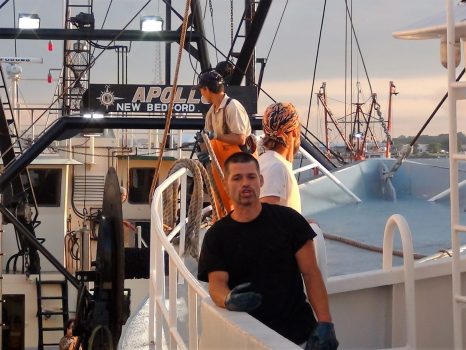
A look back at the evolution of Catch Shares
In 2010 CSF board member Nils Stolpe conducted some exhaustive research into catch shares as a management tool and given what has transpired since it is worth looking over his findings today. Here, for example is a prophetic quote from the NEFMC’S June 2010 Draft Environmental Impact Statement for Amendment 15 to the Council’s Sea Scallop Fishery Management Plan : “…consolidation measures like ITQs, but also more generally leasing and stacking, tend to have their negative impacts on those less powerful segments of the fishing industry, namely the crew, or the small business owners without a fleet of vessels or vertically integrated business. Those who are better able to take advantage of measures like leasing or stacking are then increasingly able to exert control in various markets, such as leasing quota, hiring crew, or even affecting prices that fishermen receive for their product. These kinds of changes, in turn, affect the structure of communities—through changing relations between people and shifts in dominant values—and affect the viability of fishing communities as some are disproportionally impacted by geographic shifts in fishing businesses.” That was about the scallop fleet but the impact is now decimating single boat owners in our New England groundfishery. The complete report (three papers) is included here 14:28

The Five Trillion Dollar Plan to Save the Arctic Ice
Just in case you thought the climate community had run out of absurd ideas to waste taxpayer’s money, here is an academic plan to rebuild Arctic ice, by deploying 100 million wind turbines into the Arctic Ocean. Save the Arctic with $5 trillion of floating, wind-powered ice machines, researchers recommend With the Arctic warming faster than anywhere else on Earth, a new scientific paper is proposing a radical scheme to thicken the ice cap: millions upon millions of autonomous ice machines. Specifically, between 10 and 100 million floating, wind-powered pumps designed to spray water over sea ice during the winter. In the most ambitious version of the plan, 100 million devices would be deployed across the Arctic,,, Continue to read the absurdity here! 12:33
New York Wind farm’s long-term cost will be high for power projects
 When Gov. Andrew M. Cuomo in a speech last month touted an offshore wind farm 30 miles from the coast of Long Island, he made special note of its “inexpensive energy,” saying it would “drive the economy.” While the project by developer Deepwater Wind promises many many benefits, including meeting LIPA’s green-energy goals and the state’s Clean Energy Standard, it’s hard to make the case that the power it produces will be inexpensive. Power from the current crop of natural-gas fueled plants on Long Island costs around 7.6 cents per kilowatt hour. Commercial fishing groups have generally opposed offshore wind energy, but a Siena College poll last month found 76 percent of Long Islanders supported the concept when the projects were 10 miles or more miles from shore. Read the story here 12:03
When Gov. Andrew M. Cuomo in a speech last month touted an offshore wind farm 30 miles from the coast of Long Island, he made special note of its “inexpensive energy,” saying it would “drive the economy.” While the project by developer Deepwater Wind promises many many benefits, including meeting LIPA’s green-energy goals and the state’s Clean Energy Standard, it’s hard to make the case that the power it produces will be inexpensive. Power from the current crop of natural-gas fueled plants on Long Island costs around 7.6 cents per kilowatt hour. Commercial fishing groups have generally opposed offshore wind energy, but a Siena College poll last month found 76 percent of Long Islanders supported the concept when the projects were 10 miles or more miles from shore. Read the story here 12:03
Saving the whales – 19th-century hunting techniques now used to help, not kill humpbacks
 To save whales tangled in netting and debris, rescuers take a page right out of the 1850s whale-hunting playbook. To catch and kill the animals, 19th-century whalers would harpoon the creatures, add a barrel to the line to slow and force them to surface. Then they’d lance captured whales and let them bleed out. Now, rescuers follow similar but nonviolent steps — tossing a hook to catch the debris on a whale, adding a buoy to slow it and using a knife rigged on a pole to cut away entangled fishing gear or other marine debris. Instead of a barrel of oil, their reward is watching the whale swim free. “We stole it from whalers in the 1850s,” said Ed Lyman, large whale entanglement response coordinator with the Hawaiian Islands Humpback Whale National Marine Sanctuary. “Here we are using their technique to actually save whales.” Continue reading the story here 09:58
To save whales tangled in netting and debris, rescuers take a page right out of the 1850s whale-hunting playbook. To catch and kill the animals, 19th-century whalers would harpoon the creatures, add a barrel to the line to slow and force them to surface. Then they’d lance captured whales and let them bleed out. Now, rescuers follow similar but nonviolent steps — tossing a hook to catch the debris on a whale, adding a buoy to slow it and using a knife rigged on a pole to cut away entangled fishing gear or other marine debris. Instead of a barrel of oil, their reward is watching the whale swim free. “We stole it from whalers in the 1850s,” said Ed Lyman, large whale entanglement response coordinator with the Hawaiian Islands Humpback Whale National Marine Sanctuary. “Here we are using their technique to actually save whales.” Continue reading the story here 09:58
White spot threat: is fishing finished in Queensland?
 The Logan River white spot epidemic could destroy all mainland fishing in Queensland, including a big slice of the Cooloola Coast seafood and tourism economy, industry leader Kev Reibel has warned. A Queensland Seafood Industry Association board member and Tin Can Bay trawler operator, Mr Reibel said the threat was credible and immediate. “To say we are worried would be something of an understatement,” he said in an exclusive interview with The Gympie Times on Sunday. “We don’t know if it can be stopped and we don’t know its boundaries within the crustaceans, or even if it has any boundaries. If it affects crabs, that’s another industry and another tourism factor wiped out. He backed claims by industry environmental adviser and Bay net fishing operator Joe McLeod that the apparently unstoppable virus is a threat to the food chains which sustain all kinds of fin fishing. Mr McLeod said the plankton that kicked off the fin fish food chain included juvenile prawns and other crustaceans. “If they’re not there, there is nothing for the fish to eat,” Mr McLeod said yesterday. Both said there was a fearful lack of knowledge of the virus’ boundaries, especially with the crustacean group. Continue reading the story here 09:32
The Logan River white spot epidemic could destroy all mainland fishing in Queensland, including a big slice of the Cooloola Coast seafood and tourism economy, industry leader Kev Reibel has warned. A Queensland Seafood Industry Association board member and Tin Can Bay trawler operator, Mr Reibel said the threat was credible and immediate. “To say we are worried would be something of an understatement,” he said in an exclusive interview with The Gympie Times on Sunday. “We don’t know if it can be stopped and we don’t know its boundaries within the crustaceans, or even if it has any boundaries. If it affects crabs, that’s another industry and another tourism factor wiped out. He backed claims by industry environmental adviser and Bay net fishing operator Joe McLeod that the apparently unstoppable virus is a threat to the food chains which sustain all kinds of fin fishing. Mr McLeod said the plankton that kicked off the fin fish food chain included juvenile prawns and other crustaceans. “If they’re not there, there is nothing for the fish to eat,” Mr McLeod said yesterday. Both said there was a fearful lack of knowledge of the virus’ boundaries, especially with the crustacean group. Continue reading the story here 09:32
For fisheries regulations, a Trump edict signals uncertainty
 New England fishermen and conservationists fear one of President Trump’s executive orders will have disruptive effects on fisheries management, although it will not affect routine seasonal fisheries regulation, as some had initially feared. The order prompted a fiery letter three days later from two prominent Democratic congressmen pointing out it could have “devastating impacts on commercial and recreational fisheries and the businesses and communities they support.” “Effectively what it means is that nobody can do anything because agencies will have to stop doing major regulatory actions because you can’t comply with this order, which may be the point,” says a former top federal fisheries management official, Andrew Rosenberg, who is now director of the Center for Science and Democracy at the Union of Concerned Scientists. Drew Minkiewicz, a Washington, D.C., lawyer representing larger Eastern Seaboard scallop fishermen, says fishermen need not be concerned about most regulations. “This executive order has zero impact on 99.9 percent of the fishing regulations going out, so people who are wondering if the fishing season will be delayed don’t need to,” he says. “It’s much ado about nothing.” Read the article here 08:39
New England fishermen and conservationists fear one of President Trump’s executive orders will have disruptive effects on fisheries management, although it will not affect routine seasonal fisheries regulation, as some had initially feared. The order prompted a fiery letter three days later from two prominent Democratic congressmen pointing out it could have “devastating impacts on commercial and recreational fisheries and the businesses and communities they support.” “Effectively what it means is that nobody can do anything because agencies will have to stop doing major regulatory actions because you can’t comply with this order, which may be the point,” says a former top federal fisheries management official, Andrew Rosenberg, who is now director of the Center for Science and Democracy at the Union of Concerned Scientists. Drew Minkiewicz, a Washington, D.C., lawyer representing larger Eastern Seaboard scallop fishermen, says fishermen need not be concerned about most regulations. “This executive order has zero impact on 99.9 percent of the fishing regulations going out, so people who are wondering if the fishing season will be delayed don’t need to,” he says. “It’s much ado about nothing.” Read the article here 08:39
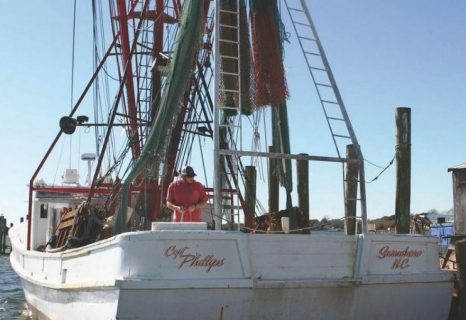
Opponents of proposed shrimp trawl limits not backing down from fight
There was one common point as local residents on opposing sides of a shrimp trawling issue reacted to news that additional restrictions for North Carolina shrimpers will likely be on the way. The N.C. Marine Fisheries Commission voted 5-3, with one member abstaining, on Thursday to approve a petition for rule-making from the N.C. Wildlife Federation, setting in motion a lengthy process of reviewing the rules proposed in the petition before a final decision is made. For commercial fishermen and those who work in the seafood industry, the long road ahead is one they are prepared to follow. “They are going to have a fight on their handssaid Tim Millis of B.F. Millis Seafood in Sneads Ferry. “People are not going to stand back. (The petition) is going too far.” Nancy Edens of Sneads Ferry, a North Carolina representative with the Southern Shrimp Alliance, attended the MFC meeting Thursday and was disappointed by the vote of the commission. Continued reading here 07:41
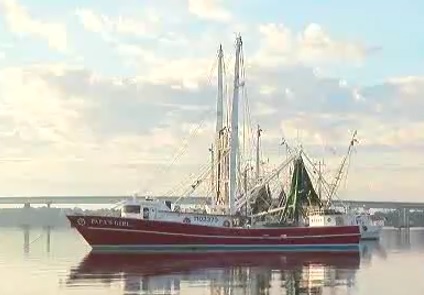
Local restaurant owners upset about North Carolina Wildlife Federation shrimping petition
The North Carolina Wildlife Federation brought forward a petition to protect juvenile fish, but many are arguing it puts their livelihood at risk. The North Carolina Marine Fisheries Commission voted to approve a petition that would regulate where, how and when shrimpers could work. The final verdict has made a lot of people in the business upset. Fulcher Seafood in Oriental employees more than 200 people. Christina Fulcher-Cahoon said the new restrictions would jeopardize their large employee base and the seafood industry completely. While the petition was approved, this is merely the first approval. It must go through several steps before it is actually enforced. There is a chance the petition will not make it through all of these steps and will never go into affect. Video, read the rest here 14:11


































